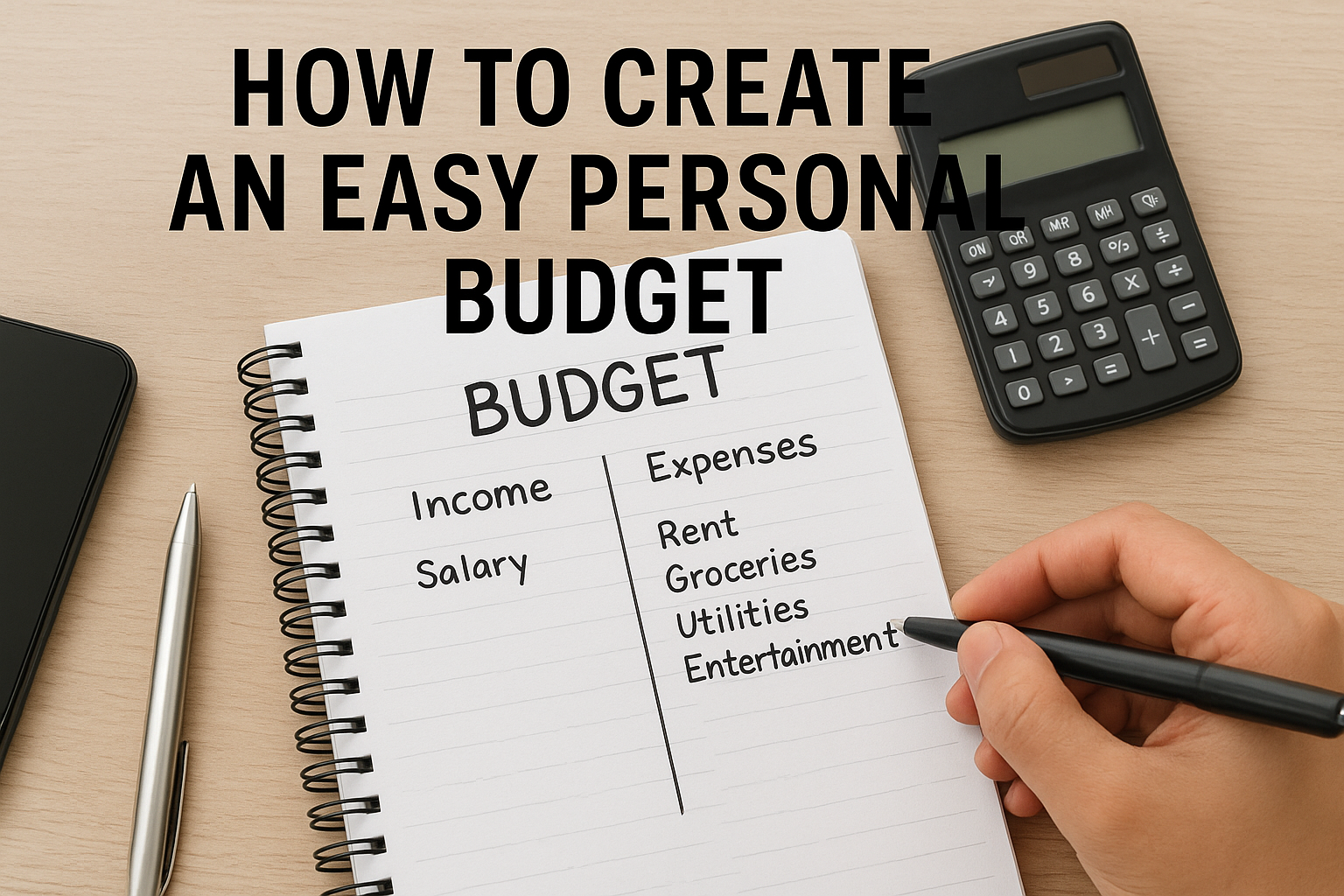If you’ve been wondering how to create a personal budget that’s simple and effective, you’re not alone. Budgeting doesn’t have to be complicated or overwhelming. With the right approach, you can build an easy personal budget to help you save money, pay off debt, and take control of your finances—without giving up everything you love.
This step-by-step guide will show you how to start budgeting, even if you’ve never done it before.
Step 1: Understand Your Income and Expenses
The first step in creating a personal budget is knowing your numbers.
- Track your income: Write down your salary, side hustle income, or any other earnings.
- Track your expenses: Look at your last month’s bank and credit card statements. Categorize your spending into areas like housing, groceries, transportation, entertainment, and savings.
Pro tip: Use free budgeting apps like Mint, YNAB (You Need a Budget), or Google Sheets to make tracking simple.
Step 2: Pick a Budgeting Method That Fits Your Lifestyle
The key to successful budgeting is choosing a plan that’s easy to stick with. Here are three popular budgeting methods:
- 50/30/20 Rule
- 50% of your income for needs (rent, utilities, groceries)
- 30% for wants (restaurants, hobbies, subscriptions)
- 20% for savings and debt repayment
- Envelope Budgeting
Perfect for cash spenders—set aside cash for each category and stop spending when it’s gone. - Zero-Based Budgeting
Assign every dollar to a purpose, so income minus expenses equals zero.
Step 3: Cut Back on Unnecessary Spending
Once you see where your money is going, you can find easy ways to save:
- Cancel subscriptions you don’t use.
- Cook at home more often instead of eating out.
- Plan your grocery list to avoid impulse buys.
Even small changes can help you save hundreds or even thousands of dollars a year.
Step 4: Set Clear Financial Goals
A budget is easier to stick with when you have a purpose. Examples of smart financial goals include:
- Short-term: Save $500–$1,000 for an emergency fund.
- Medium-term: Pay off high-interest credit card debt.
- Long-term: Save for retirement or a down payment on a home.
Write down your goals to keep yourself motivated.
Step 5: Review and Adjust Your Budget Monthly
Your financial situation can change, and your budget should change with it. Each month:
- Check if you overspent in any category.
- Adjust your budget for upcoming expenses.
- Celebrate your progress, even small wins.
Why Budgeting Matters
An easy personal budget gives you control over your money. Instead of wondering where your paycheck went, you’ll know exactly how much you can save, spend, and invest every month.
Budgeting isn’t about restriction—it’s about freedom and financial confidence. Start small, be consistent, and watch your savings grow
